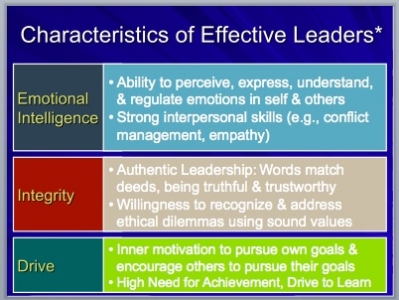
This "leading from behind" criticism is naïve, which is not terrible, of course, but also silly, because those who use this expression don't know they are saying Obama led in a mature, effective manner. Those who say Obama led from behind are complimenting Obama, and if they users want their words to be negative, a criticism, they fail to understand their own English language.
Leadership is effective when it becomes influence, which is a long term method to improve whatever needs to be improved. "Out front" leadership, often taking the form of dictate and bullying has a limited power over people or other countries.
Any good management text will tell you that influence works far longer and better than dictate or bullying people.
So this "criticism" is not working my Republican friends, at least not for someone like me who has managed people for 44 years while working.
"Mandela Saw the Wisdom in Leading From Behind"
Part of his legacy is knowing the difference between assertiveness and leadership.
By Ilan Mochari
http://www.inc.com/ilan-mochari/mandela-lead-from-behind.html
"1. View leadership as a collective activity. An ideal leader knows how to cultivate a setting in which others can step up and lead, Hill tells Harvard Business Review.
"This image of the shepherd behind his flock is an acknowledgment that leadership is a collective activity in which different people at different times--depending on their strengths, or 'nimbleness'--come forward to move the group in the direction it needs to go. The metaphor also hints at the agility of a group that doesn't have to wait for and then respond to a command from the front. That kind of agility is more likely to be developed by a group when a leader conceives of her role as creating the opportunity for collective leadership, as opposed to merely setting direction."
2. Don't confuse displays of assertiveness with leadership. If you do, you might overlook some great potential leaders in your organization, just because they happen to be less vocal or showy in the way they get things done. "Because they don't exhibit the take-charge, direction-setting behavior we often think of as inherent in leadership, they are overlooked when an organization selects the people it believes have leadership potential," Hill says."
"Leading from Behind"
Linda A. Hill
May 05, 2010
https://hbr.org/2010/05/leading-from-behind
"For now and into coming decade or so, the most effective leaders will lead from behind, not from the front — a phrase I’ve borrowed from none other than Nelson Mandela. In his autobiography, Mandela equated a great leader with a shepherd: “He stays behind the flock, letting the most nimble go out ahead, whereupon the others follow, not realizing that all along they are being directed from behind.”
"Influence and Leadership"
Adi Ignatius
From the July–August 2013 Issue
https://hbr.org/2013/07/influence-and-leadership
"Cuddy and her coauthors show that leaders who try immediately to project strength run the risk of instilling a counterproductive fear in the very people they want to inspire. Without a foundation of trust, a company’s employees may comply outwardly with their leader’s wishes, but they’re much less likely to comply privately—to adopt the values, culture, and mission of the organization in a sincere, lasting way."
Be aware! Beware!
